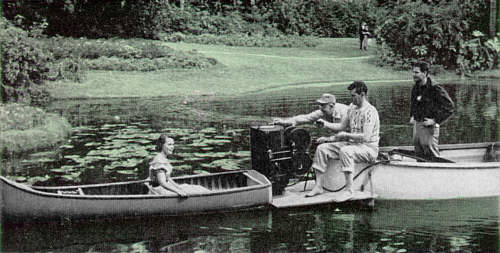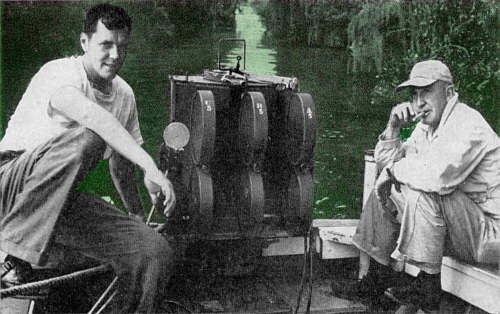And what an answer it promises to be! The
new movies, called Cinerama, are not stereoscopic.
They don't have to be. The huge curved screen,
more than three times as wide and half again as high
as the standard theater screen, wraps the viewer in
the center of the scene. The picture, projected from
three booths, encompasses everything a normal
person would see with his own eyes if he were
standing where the camera was. Result-a three-dimensional illusion created by the viewer's own
visual clues. And no one needs to wear the glasses
that are needed
|
|
for true stereoscopic projection.
To heighten realism, the Reeves Soundcraft Corp.,
owner of Cinerama, has added stereophonic, or
"three dimensional," sound. If a person on the left
side of the screen is talking, that's where the voice
comes from. A gunshot on the right comes from
that side. An airplane approaching from behind the
audience roars overhead and its sound follows it as
the image reaches the screen and zooms off toward
the horizon far in the background.
|
|





